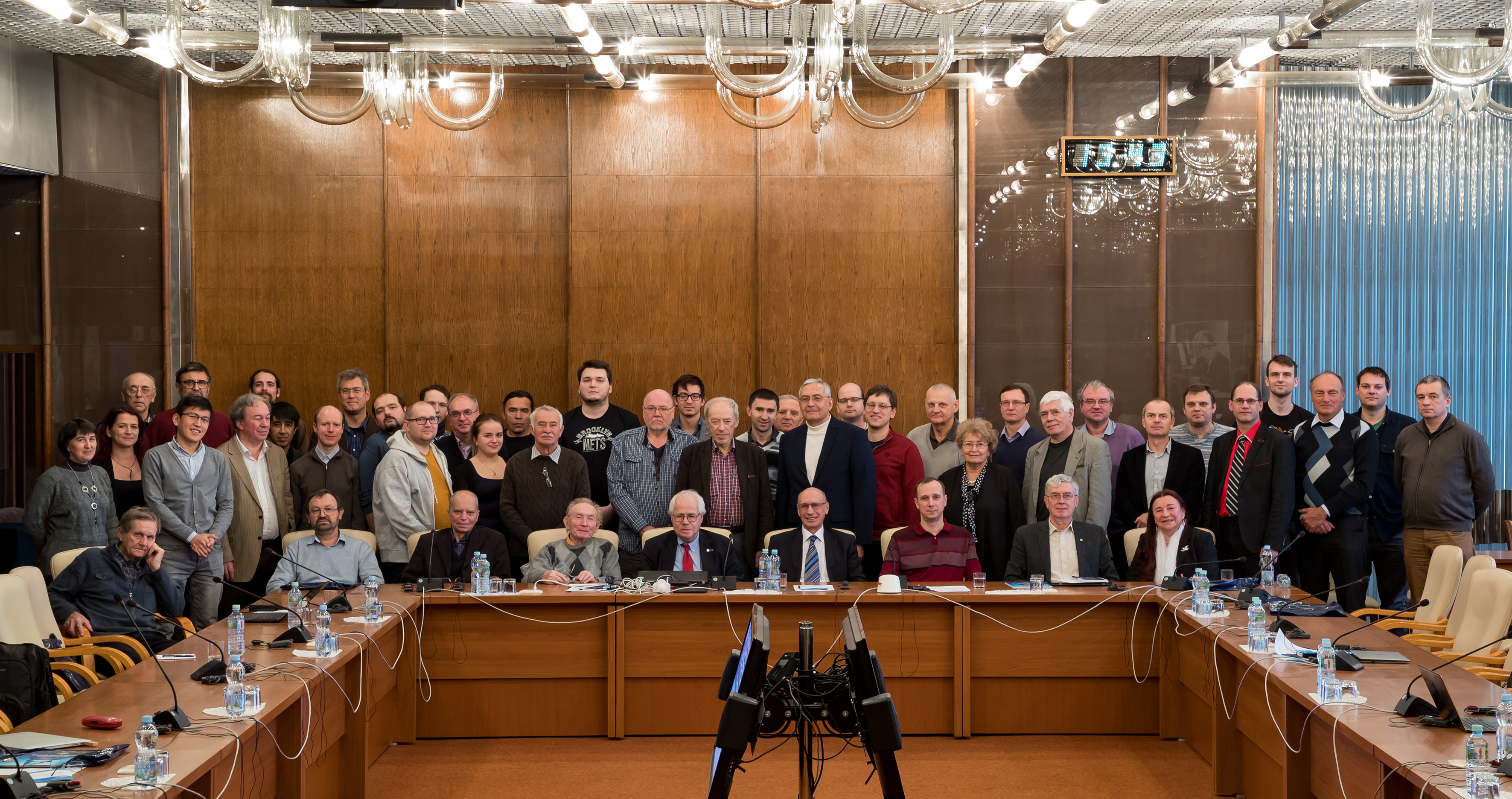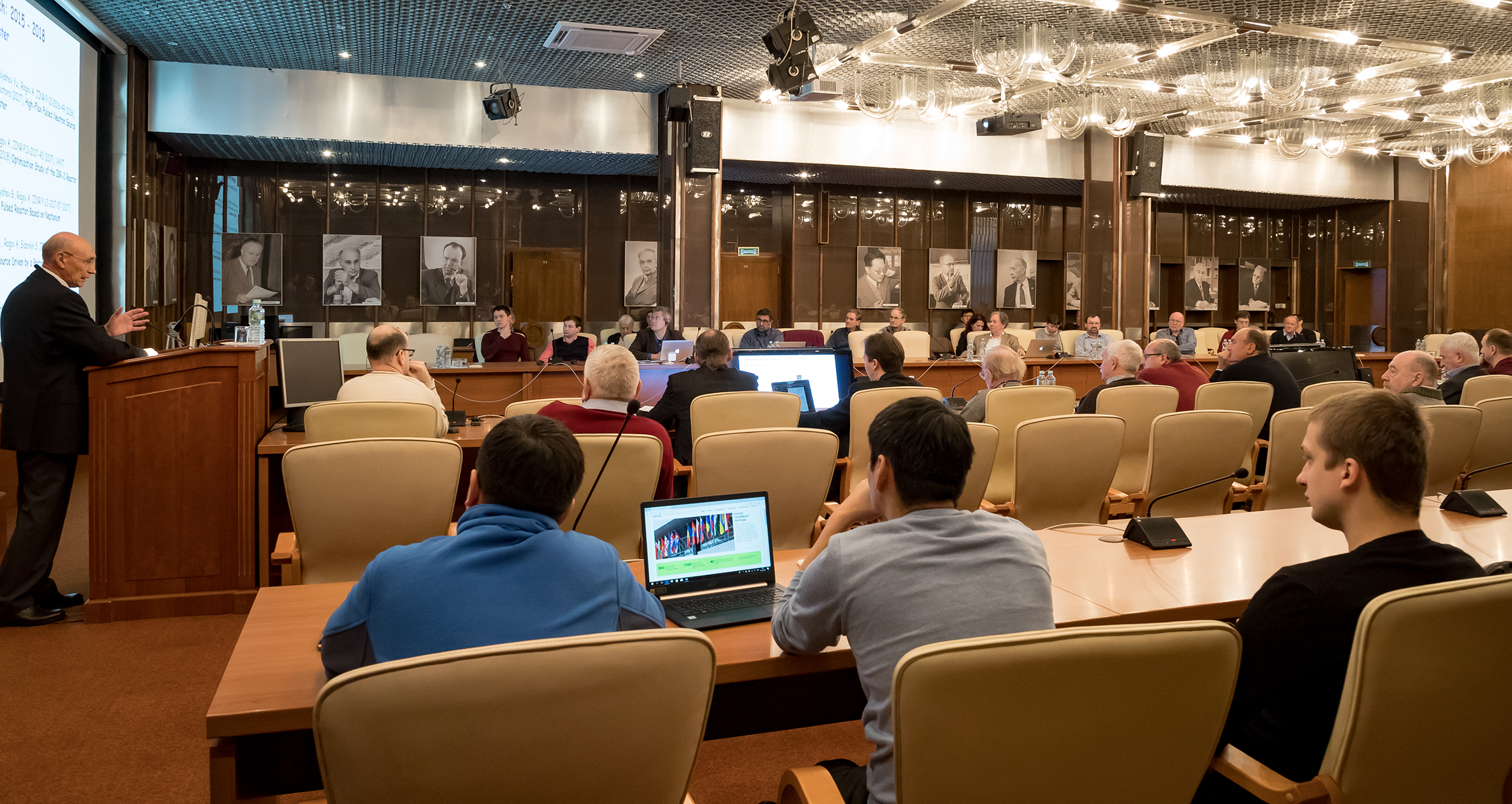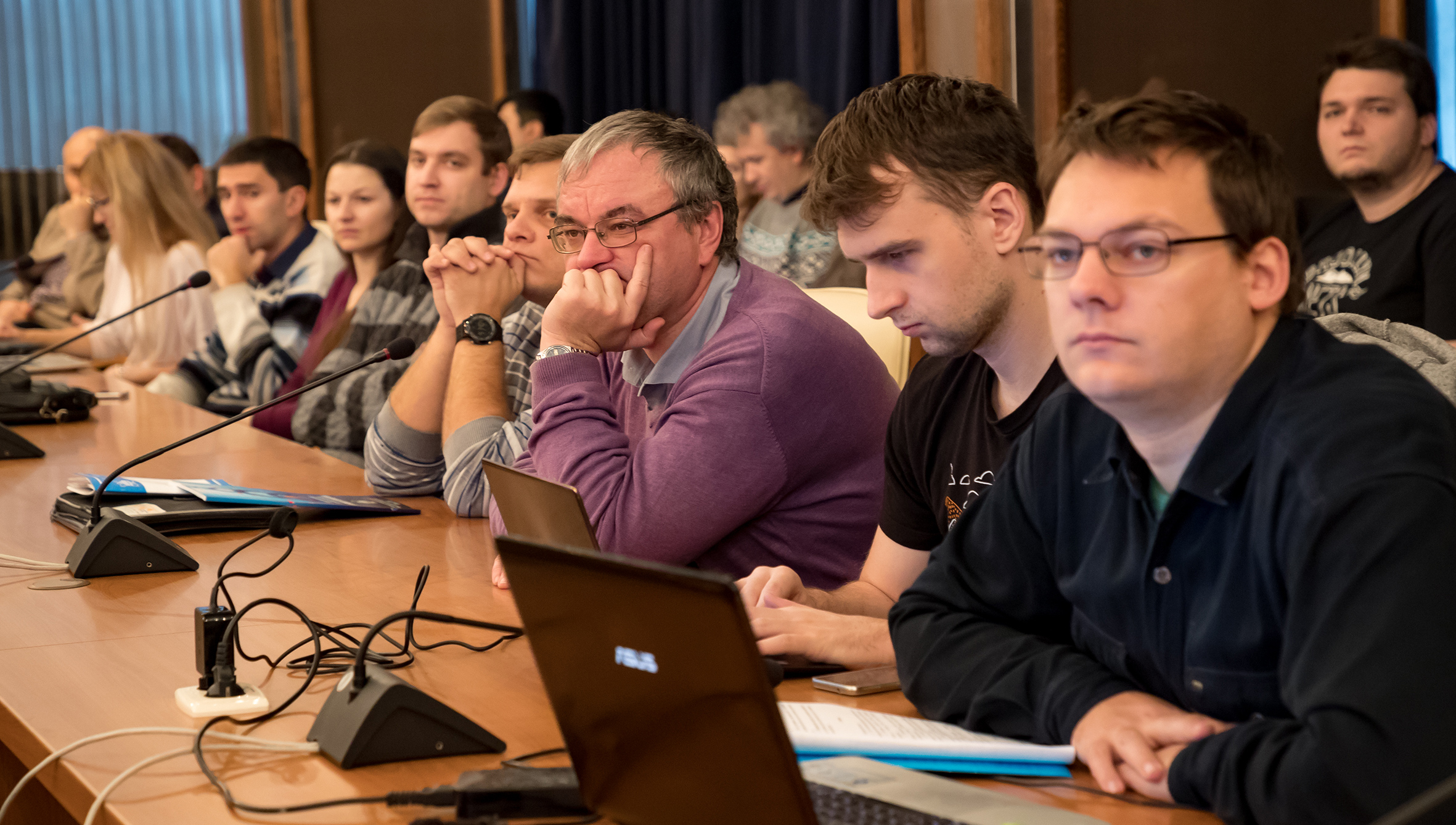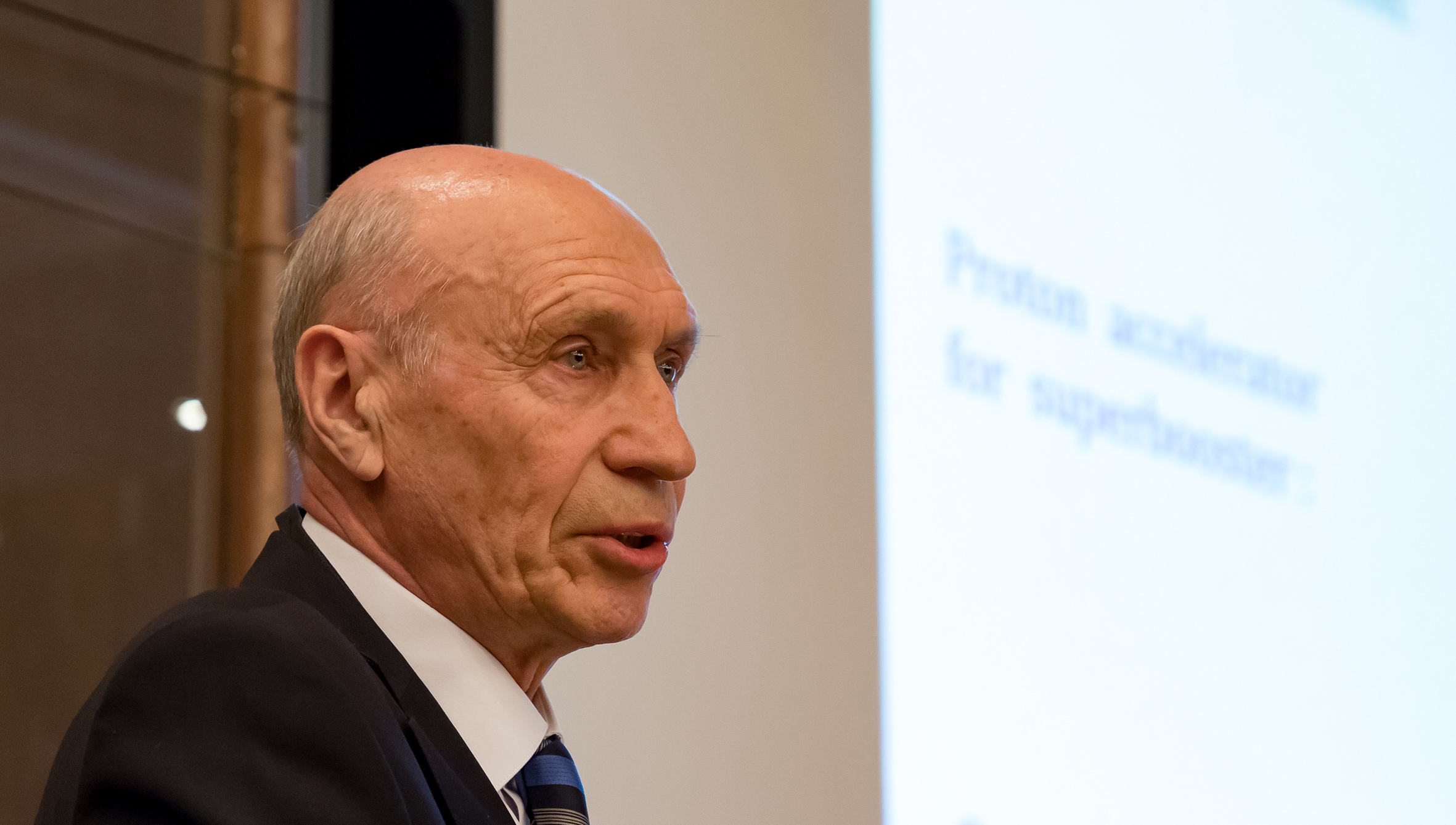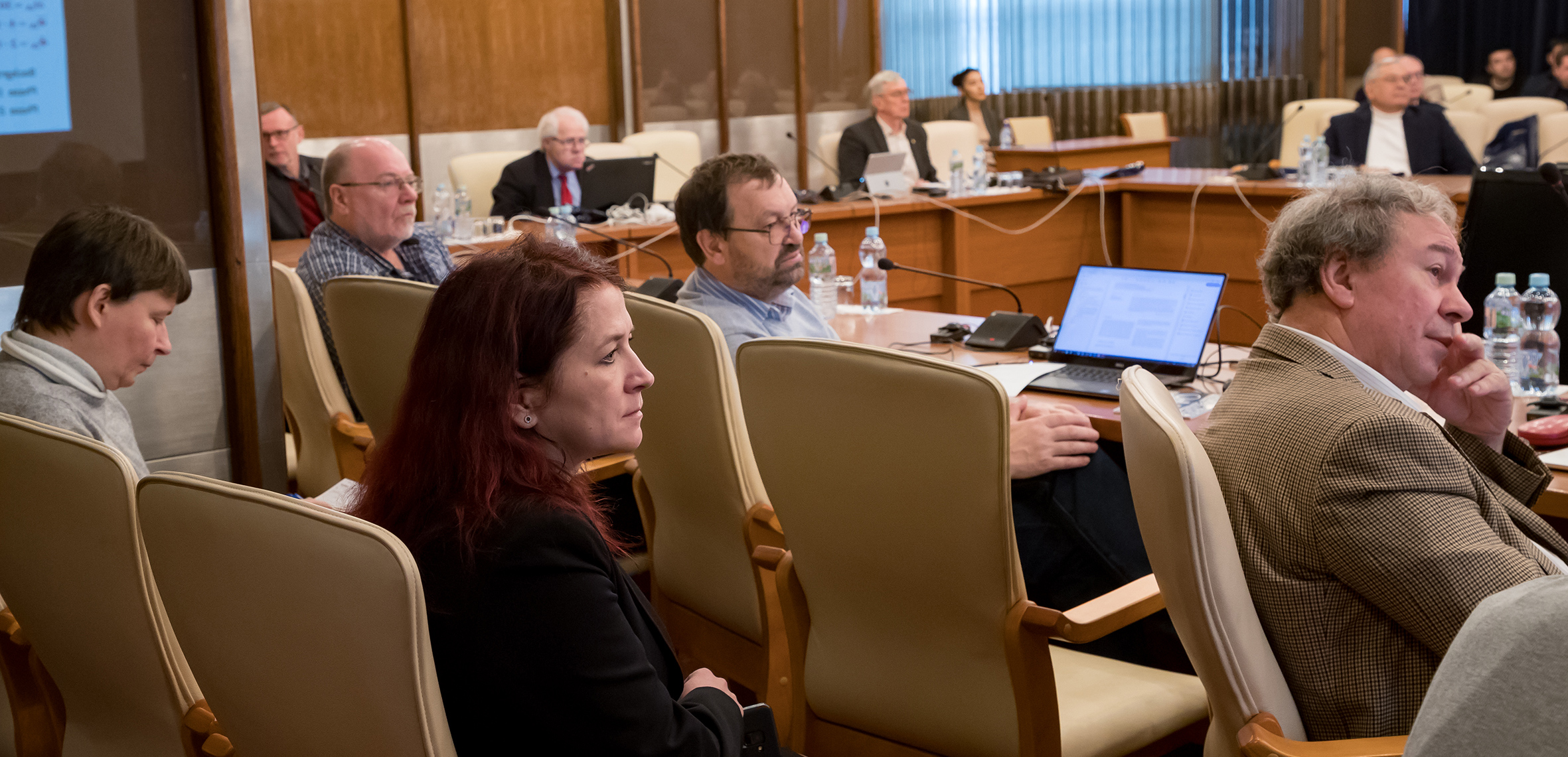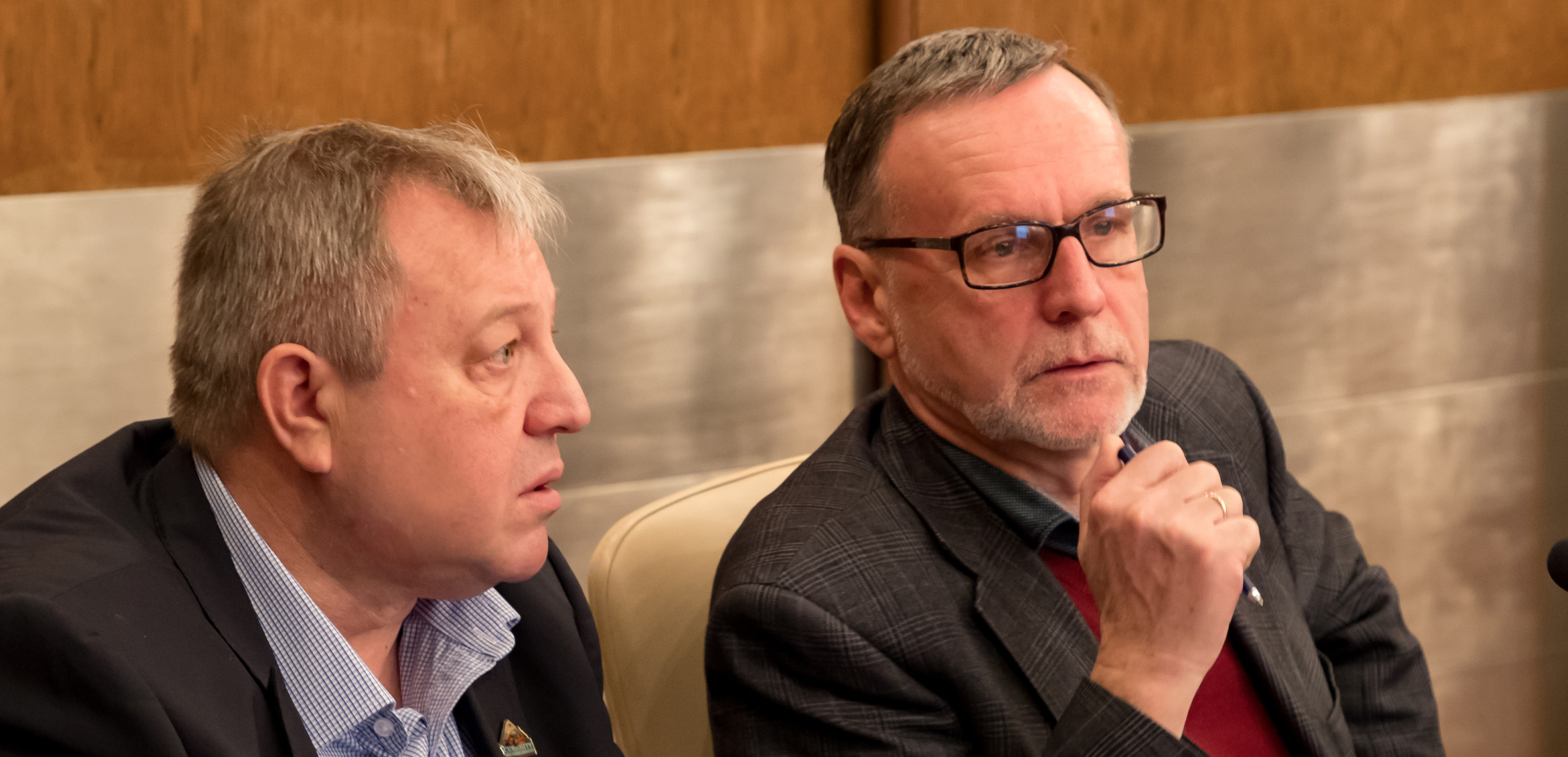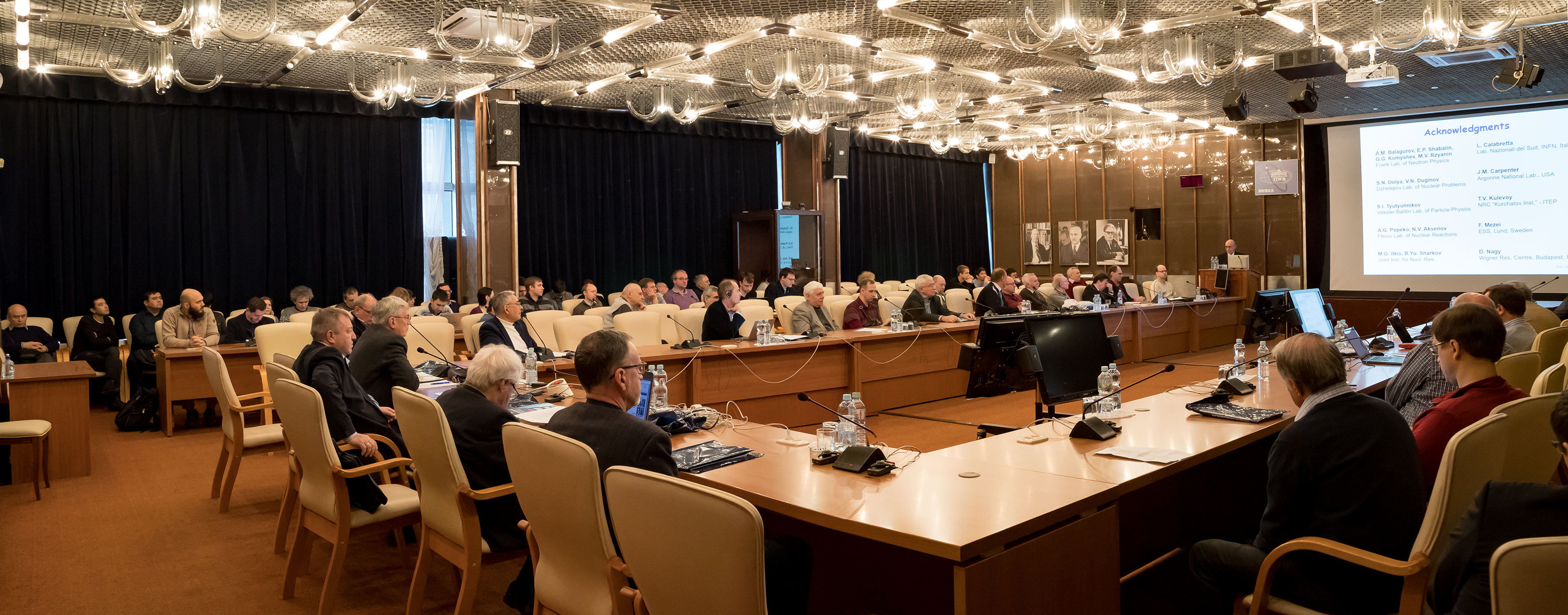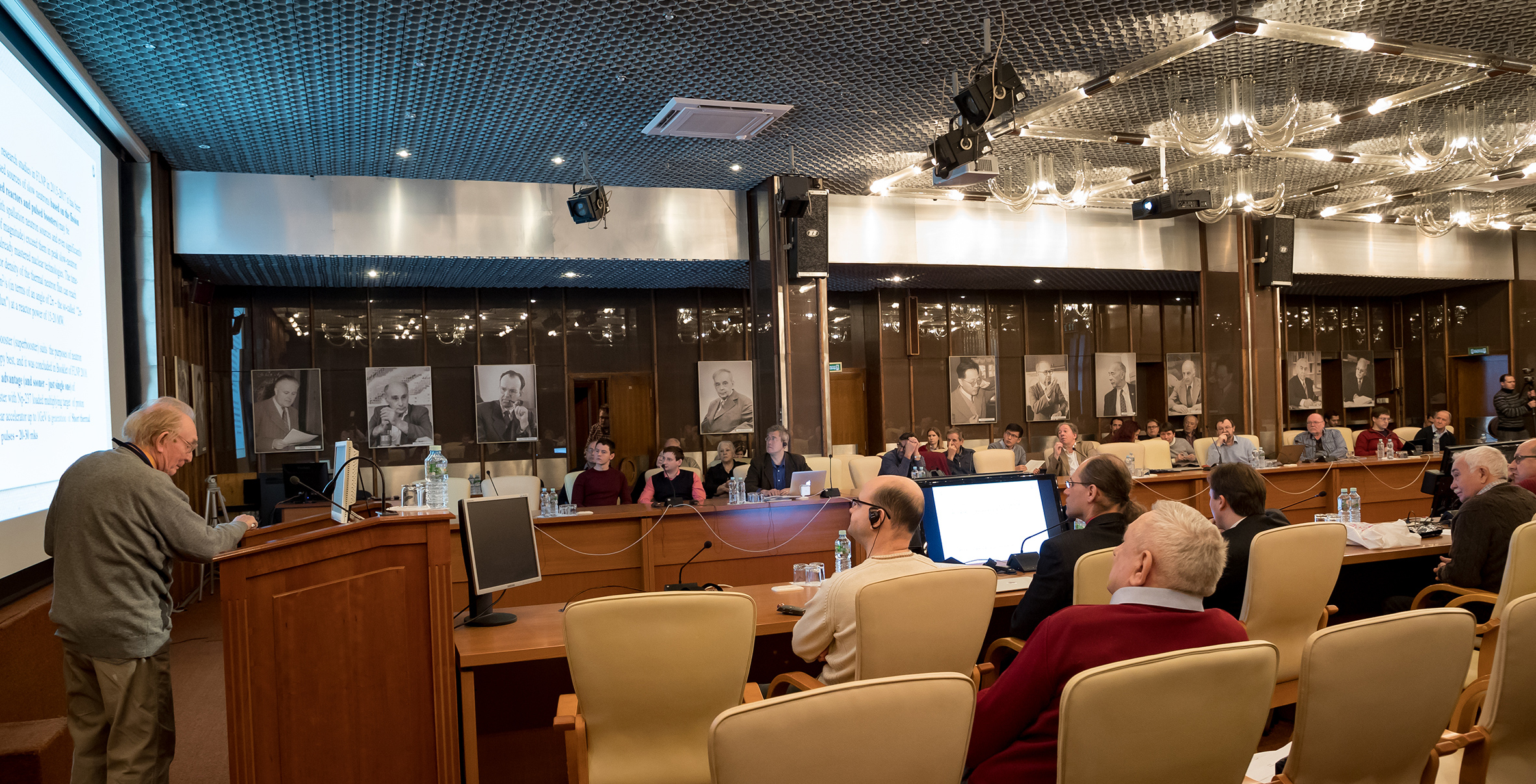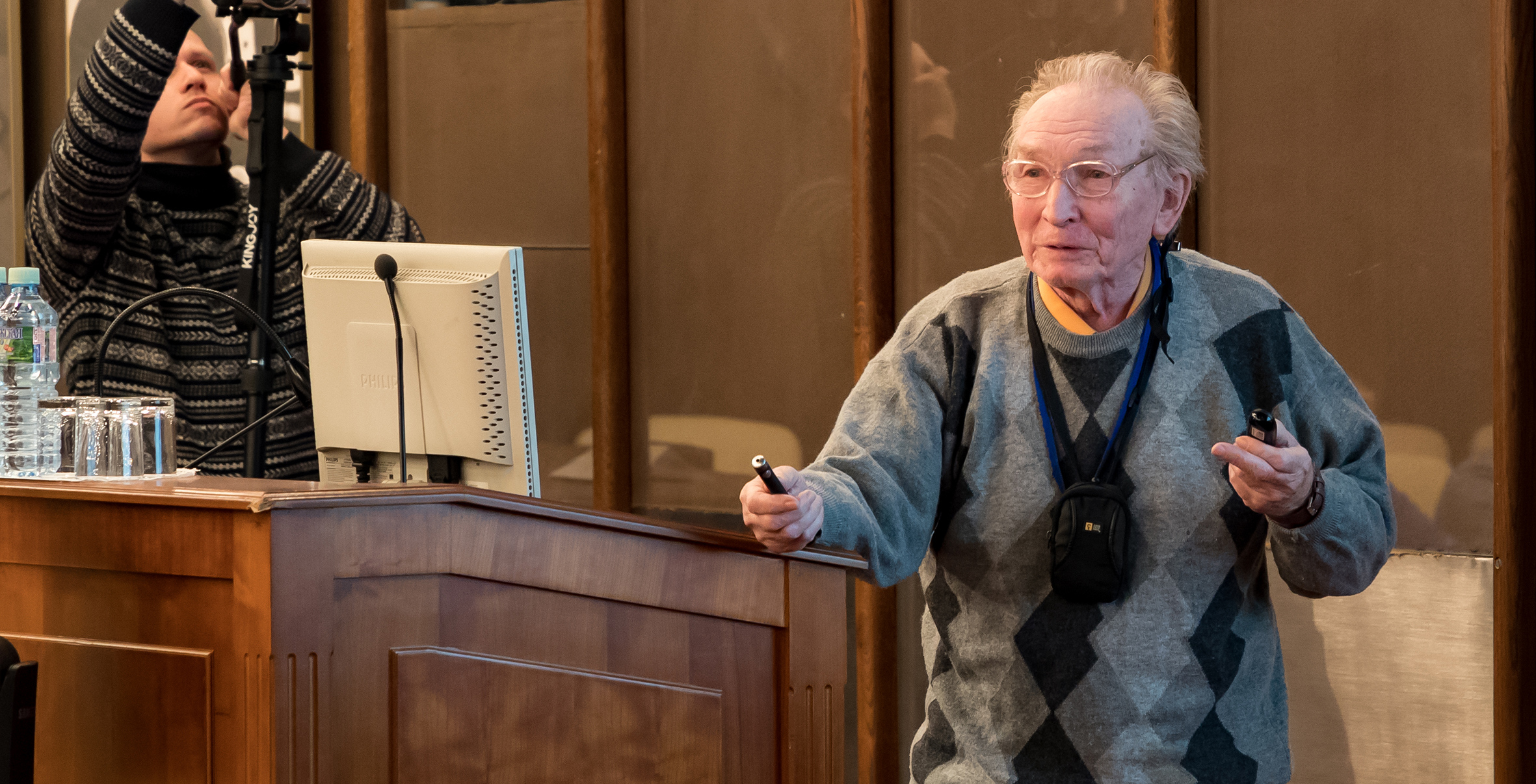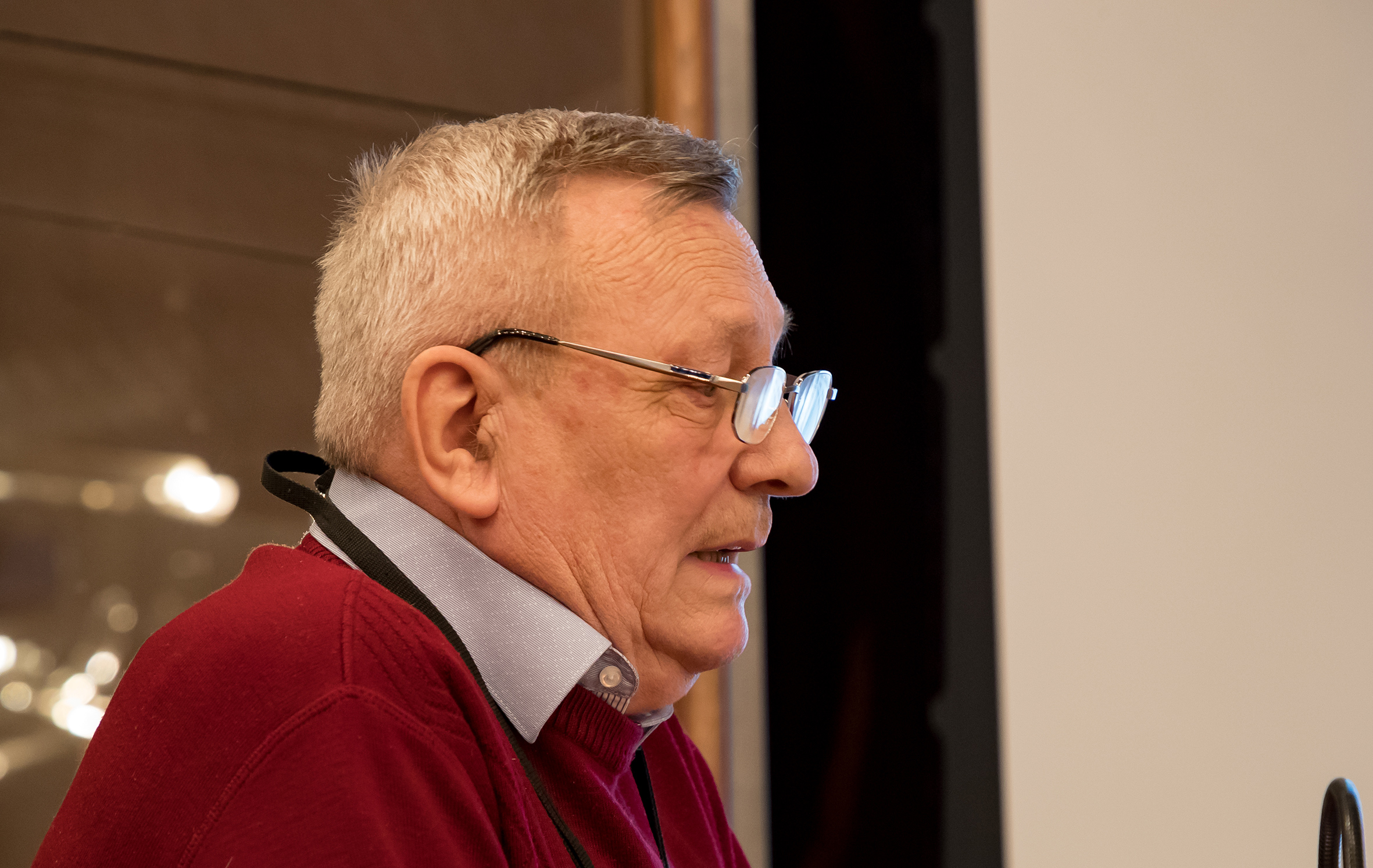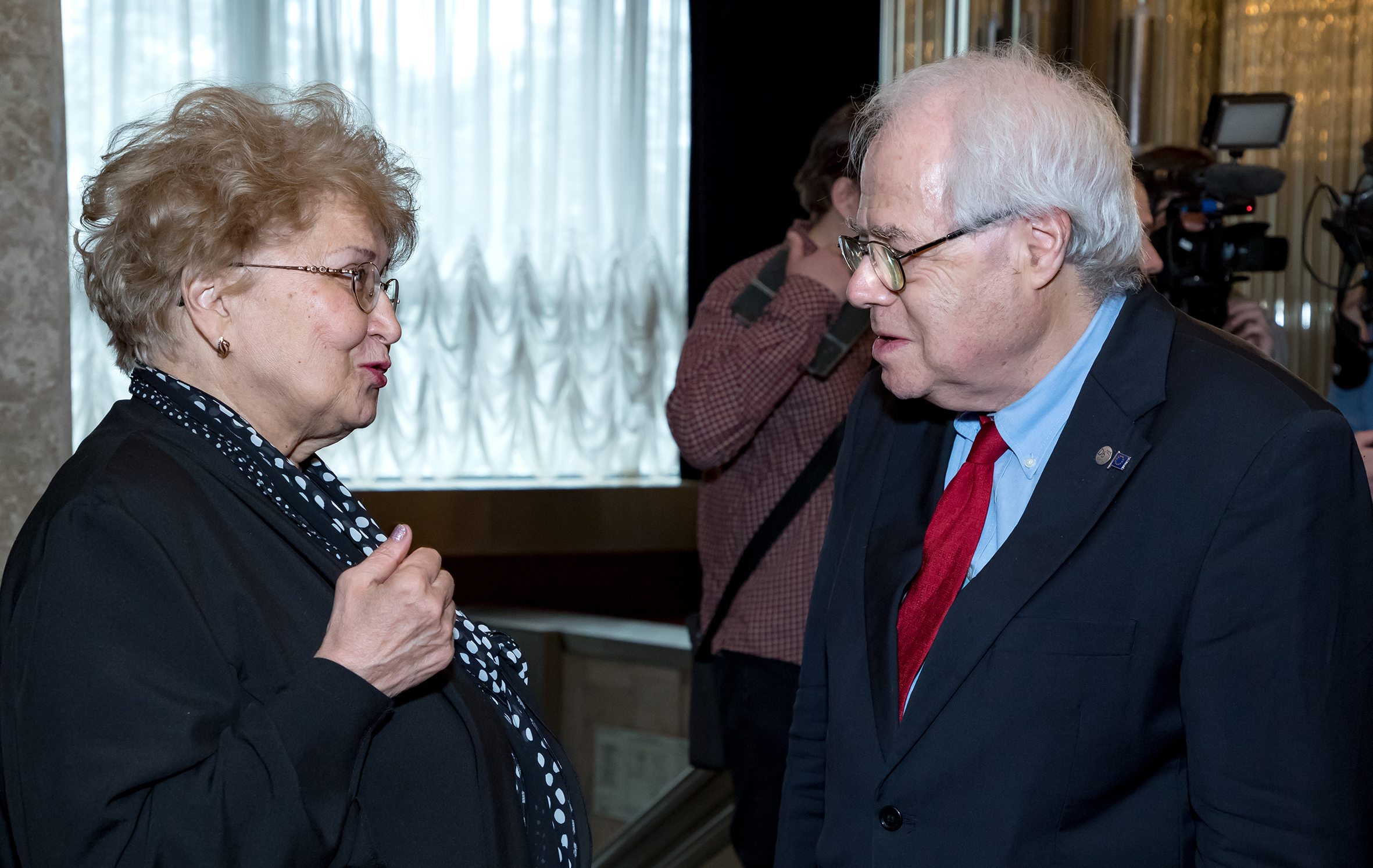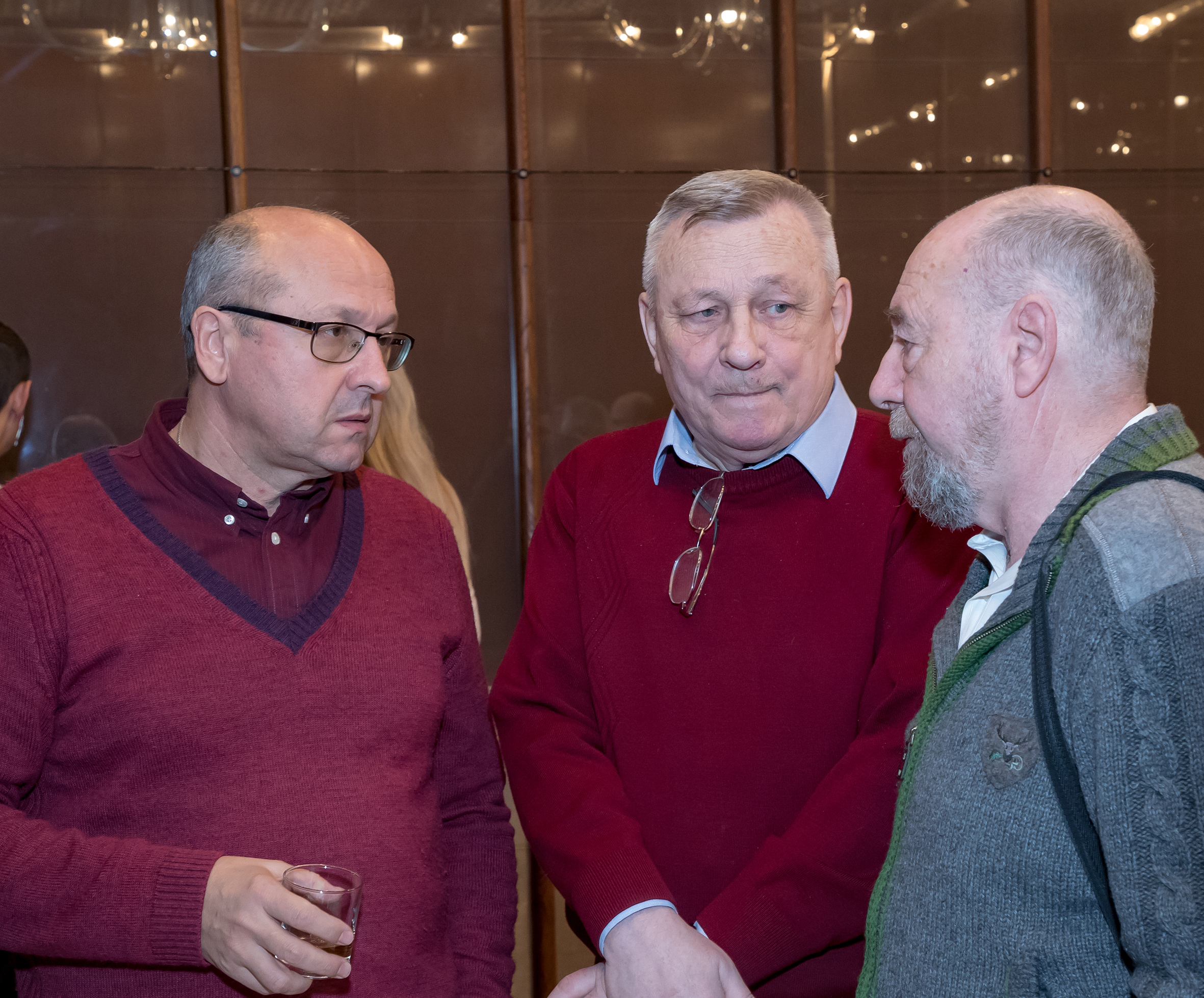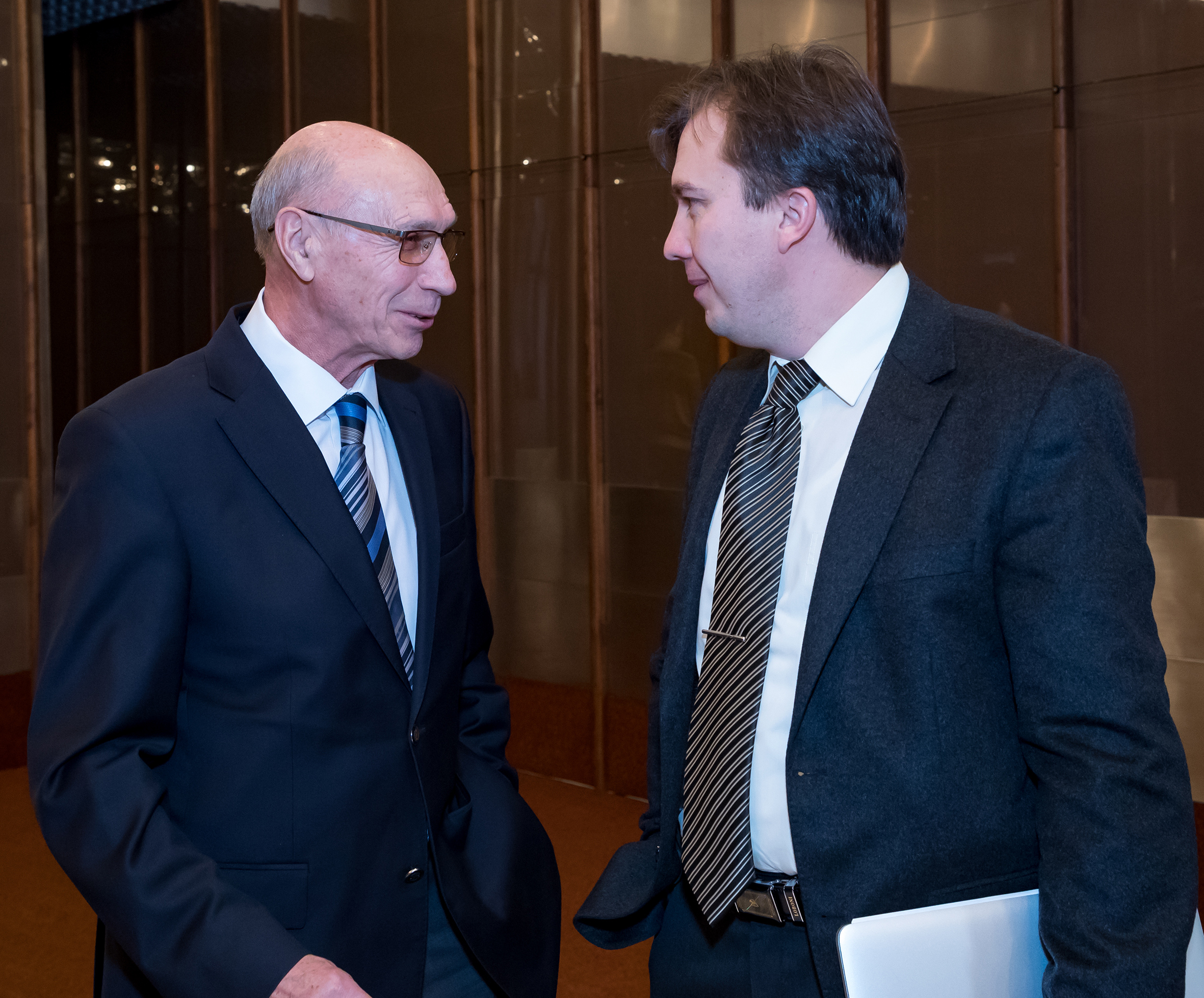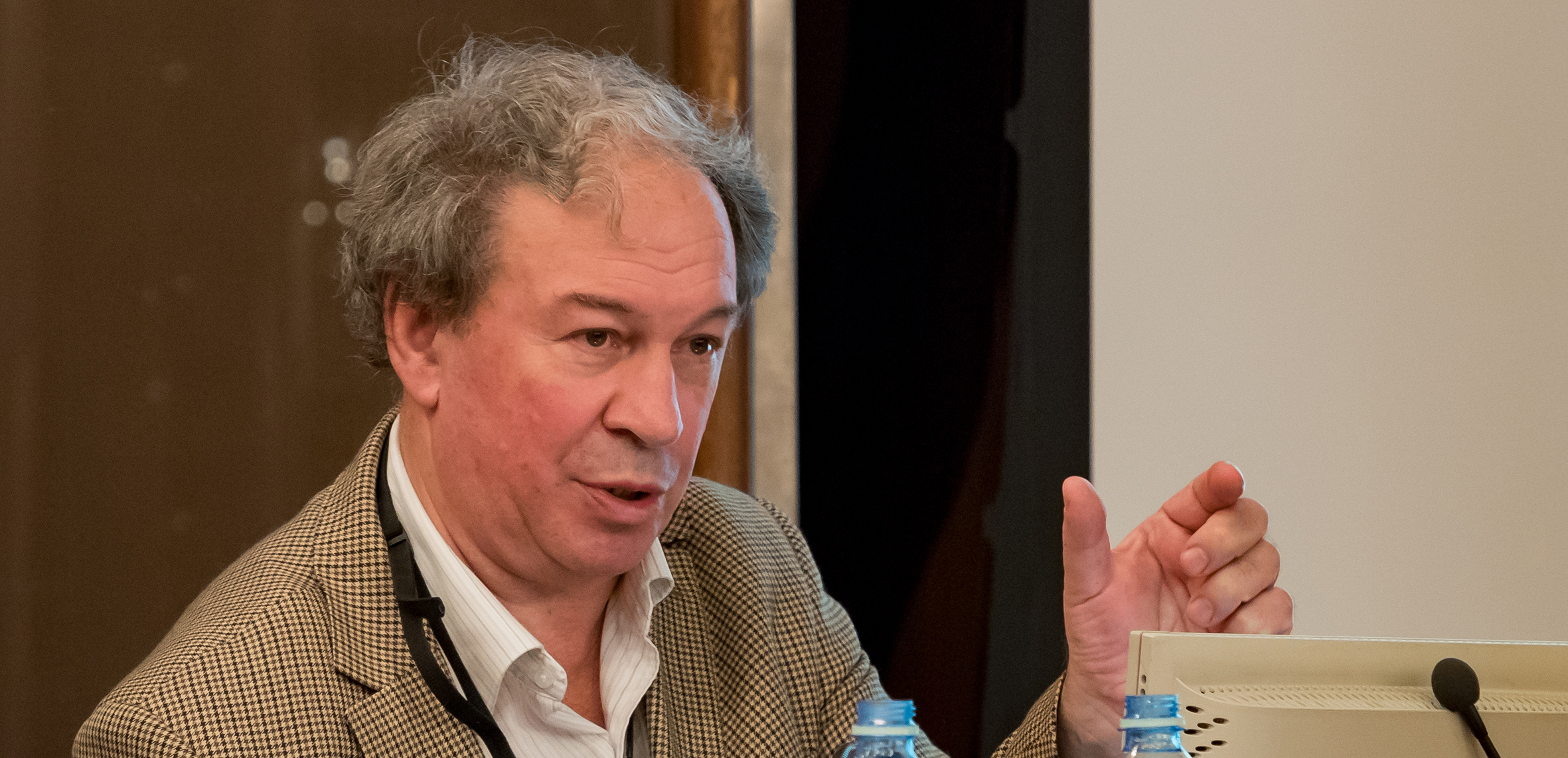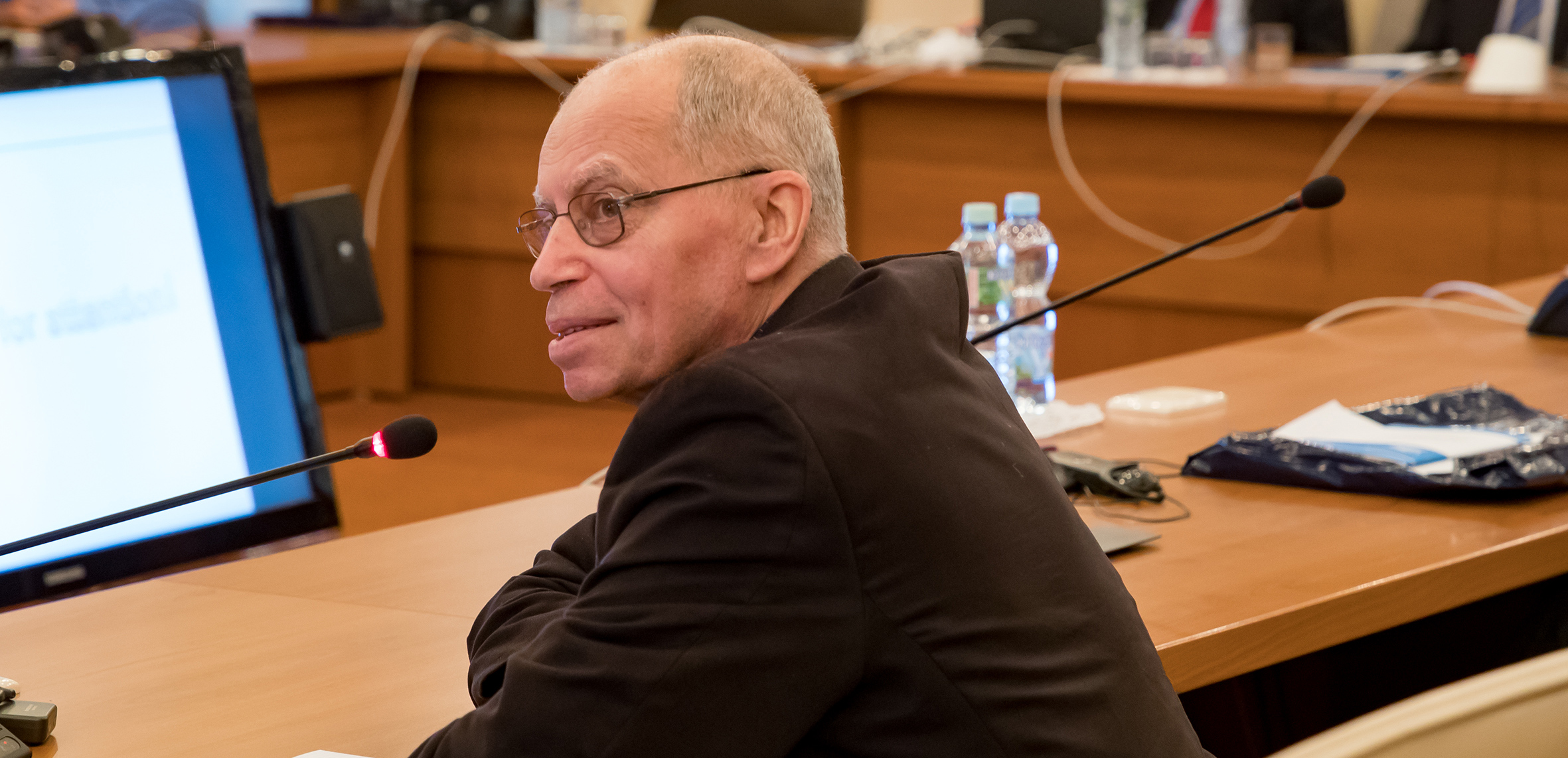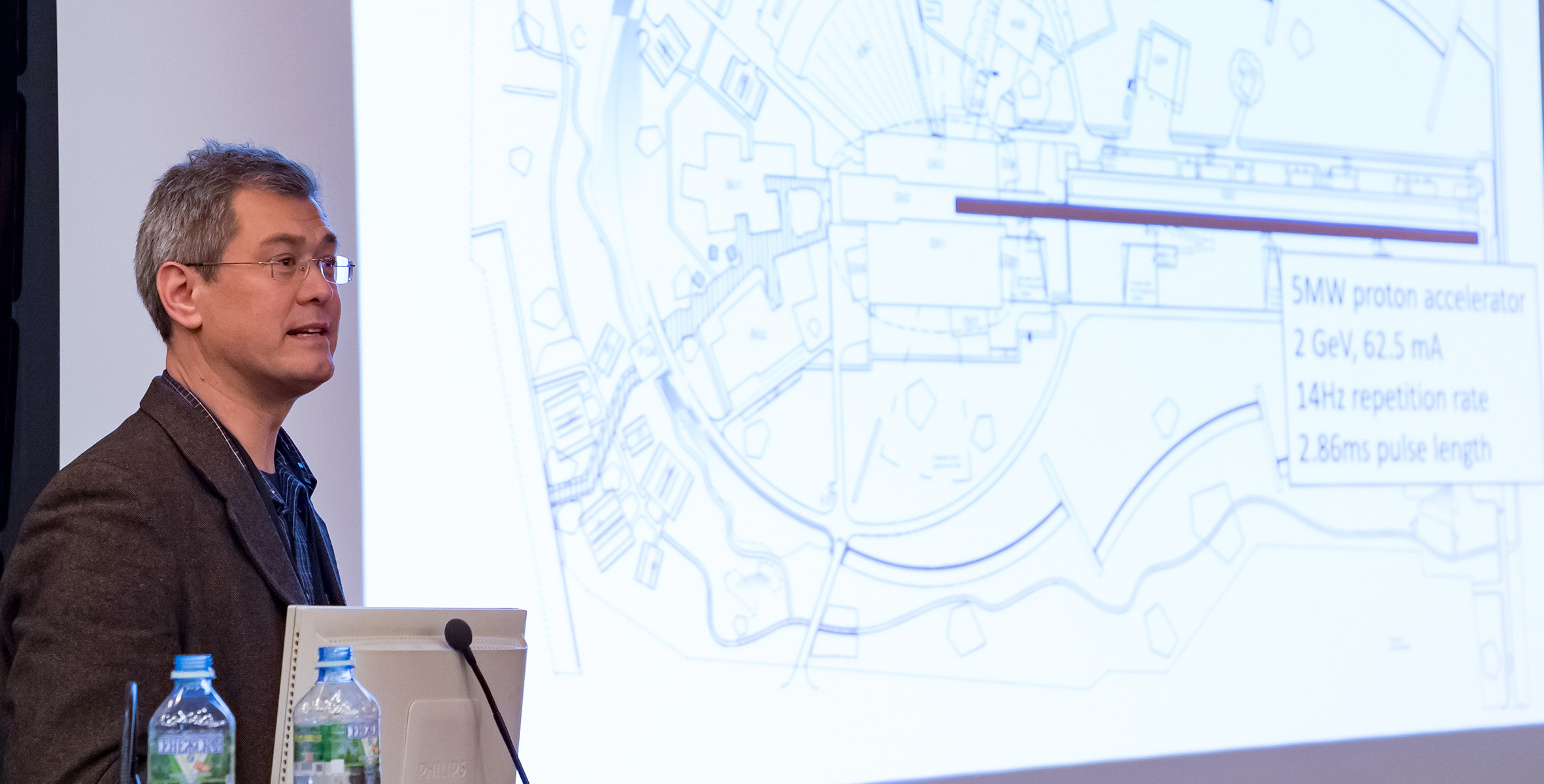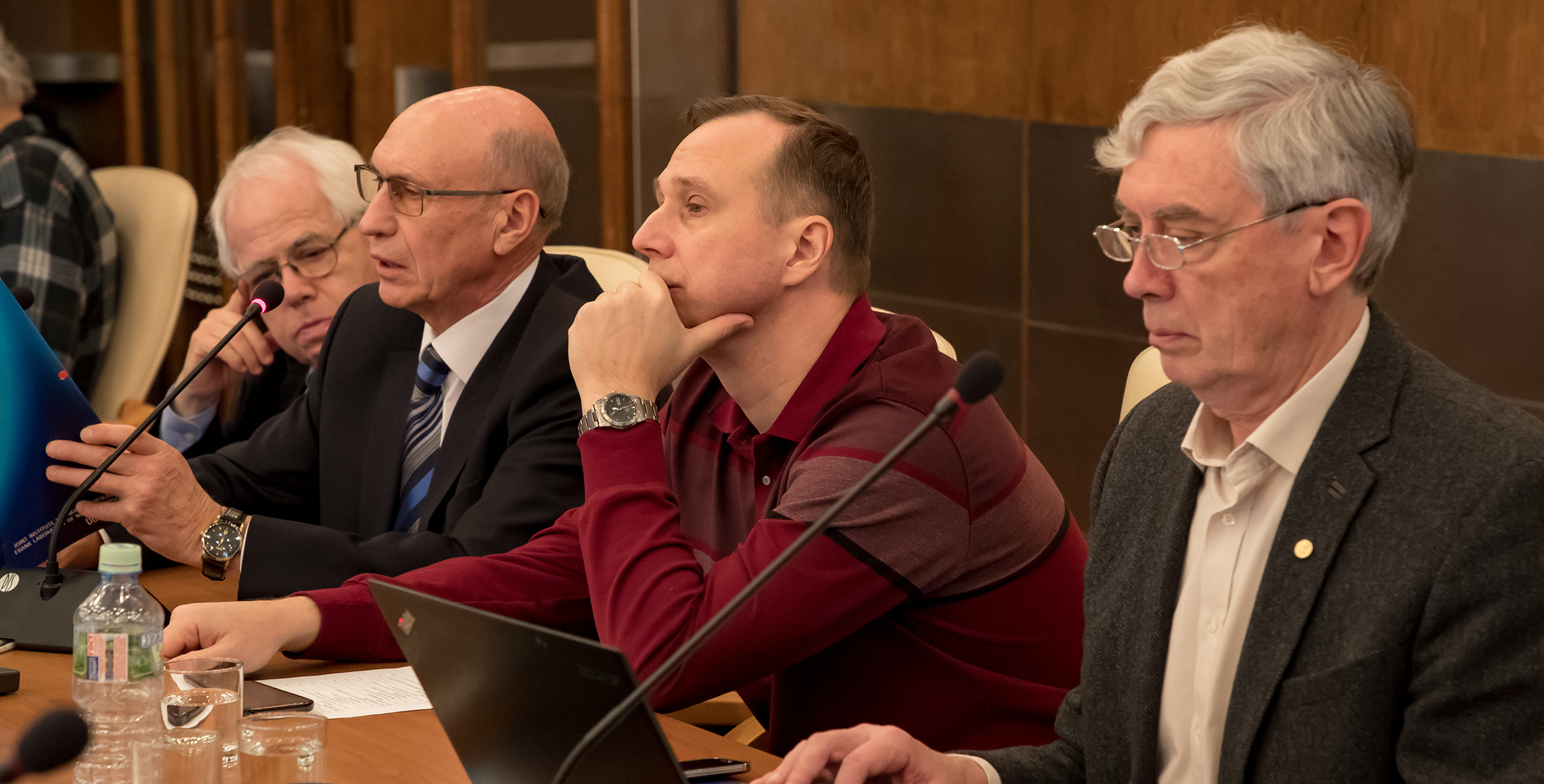A new neutron source. The first stage is completed
News, 20 December 2018
On 6 – 7 December 2018, the Workshop «Advanced ideas and experiments for new Dubna Neutron Source (DNS-IV). Related moderators and infrastructure» was held in the International Conference Hall. The workshop gathered a large number of FLNP staff members, specialists from other laboratories of JINR, as well as from leading European and Russian research centres.
Opening the event, FLNP Director V.N. Shvetsov noted that this workshop was the first but definitely not the last, so as a way of a ceremonial welcome to all participants V.L. Aksenov would present the first report on a new source.
“Today we have a stage meeting as far as we conclude the first stage of our activities,” Victor Lazarevich started his speech. “Yesterday, a meeting was held with the participation of chief engineer of all research reactors and the engineering group from NIKIET, the Institute that constructed all reactors of our country. This workshop concluded the first stage that lasted from 2015 until the present year. It started with the report by E.P. Shabalin on a new reactor for replacing the IBR-2. Now, we enter the technical stage that will be finished in 2020 by the development of the technical design.
Dubna is a hometown of superboosters. The first IBR developed in 1960 was complemented with the microtron in 1964. Five years later, the IBR-30 was brought into operation; in 1982, the IBR-2 was launched. It was supposed to be operated with the LIU-30 injector, but the idea was not fulfilled. We move on in this direction.” Then, the reporter elaborated on advantages and disadvantages of two variants of a new neutron source: a reactor and a superbooster. He told the audience about calculations and research on each of them carried out for three years, challenges, the participation of such world-leading experts as J. Carpenter (USA), L. Calabretta (Italy) in discussions. Answering the questions of Dubna journalists, Victor Aksenov said:
– The life of our great IBR-2 reactor will come to an end approximately in 2035 – 2037. That is why there is an obvious question: what will be there after the reactor? We have less than 20 years, it is not a long period, and I would even say that it is a short period for the creation of such large facilities. That is why three years ago, in 2015, we started to work on development of a new neutron source. Undoubtedly, an ambitious task was set: not only to achieve the neutron flow higher than that of IBR-2 but to gain the maximum flow of neutrons. This task is mainly connected with the scientific programme, and it means that it is necessary to try to guess what will be with physics in 20-30 years. It is a complicated task as far as science has new events virtually every day. Last three years, we were engaged in it: we made forecasts for the development of scientific research carried out with neutrons and, most importantly, concepts of a new neutron source were worked out.
As a result, our concepts of a new neutron source are being passed to the main engineer of reactors in the NIKIET, a famous organization that designed all research reactors of the country, including our IBR-2. We have two concepts. One is a pulse batch reactor IBR-3, it is seen from the name that it is an ideological successor of our set of pulse reactors that have been successfully operating in Dubna for almost 60 years. The second project is a new to us system – the neutron source based on the proton accelerator. These two developments have been sent to the chief engineer who will say whether the projects we have developed can be technically implemented. The today’s meeting sums up a three-year period of work, the status of these two projects will be specified, and it is very important that requirements of physicists to a new source will be outlined. The issue is complicated, it can be long discussed, but we need to move on, that is why at a certain stage of the discussion we need to come to a particular result.
 E.P. Shabalin discussed his concept of the new source “Neptun” after his performance.
E.P. Shabalin discussed his concept of the new source “Neptun” after his performance.
FLNP staff members mainly participate in today’s meeting as far as, I repeat once again, it is some kind of a concluding workshop. All discussions are held in accordance with scientific democracy, i.e. numerous seminars, scientific and technical councils have been held for the last 3 years in order to provide an opportunity for everyone to express himself. Today, it is a concluding meeting after which, in accordance with principles of democratic centralism, it will be said: “We have had discussions; it’s time to finish them.” The second part of the audience was represented by our colleagues from other JINR laboratories, first of all. When we consider a promising scientific programme, we base on current issues trying to unite this programme with the scientific programme of the Institute at large in order to use opportunities of other laboratories. The third part of the audience was represented by our colleagues from other neutron centres: PNPI that is a part of the NRC “Kurchatov Institute”, and the INR RAS in Troitsk – these are two world-leading neutron centres in the country. Our colleagues from the Institute Laue–Langevin in Grenoble, it is, metaphorically speaking, the neutron capital of Europe that is being developed nowadays in Swiss. These are lighthouses we orient to in our developments.
Will be a new source constructed at the IBR-2 place?
I worked as Director of the St.-Petersburg Institute of Nuclear Physics for five years and was engaged in concluding of the construction of the new powerful reactor PIC. It is quite an old project continued since the beginning of the 1970s. So now, I know for sure that a new facility should be constructed at a new place and with new materials and equipment. We plan to use the territory next to that of the IBR-2 reactor, there is enough space.
When will be the concept of a new source chosen?
Next year, when the NIKIET chief engineer will make his working out of it and will offer to us a so-called conceptual project. It means that they will work at both offers and will give their verdict on the possibility of their technical implementation. Everything we are discussing here today is considered to be scientific developments. There were several variants, two of them have been selected, and now we have a question about their technical implementation, as far as it is a nuclear facility this question mainly deals with nuclear safety. It will virtually a determinant.
You didn’t ask me about the youth: you, young people, are not very concerned about it. It is obvious that everything is implemented for those young people who even have not yet entered universities. Those students studying at my department of the MSU will become serious scientists to the moment of creation of the new source. I would place the issues of training young staff along with the issue of solving technical problems. It is a priority task for us I would say. So, I address to young people, school students, and students to come to us at first, to watch everything, to have talks. If they like it, we will teach them.
JINR Vice-Director B.Yu. Sharkov also took part in the meeting: Today, we have a significant event – a workshop on new ideas and new experiments related to the development of the new generation of neutron sources at JINR. It is a topical issue in terms of the strategic development of JINR with the perspective until 2030 and further, and FLNP works on the concept of the new source for several years. It must be based on pioneer developments and principles, it must be unique. As a result of all discussions and thorough consideration, we should come to the concept of the new source for such important fields of research in our Institute as condensed matter physics, radiation biophysics, material sciences, and, of course, nuclear physics. Now, there is a collision of two very interesting ideas, but, as it is known, the truth is sprout in the discussion. The discussion is constructive and is held with the participation of world-leading experts who have experience of work on similar sources abroad. Now I like the tone of the discussion, its direction. I think that at the upcoming PAC for condensed matter physics in January, the results of this work will be presented. I am optimistic about it because FLNP works at a very good pace, in the right direction, attracts the best experts in the world – as it should be in our great Institute!
A.M. Balagurov organized in FLNP a series of seminars for discussion of necessary for experimentalists moderators and spectrometers on the eve of the meeting: The point is that the source’s characteristics and its construction are discussed jointly with the parameters of spectrometers at it as far as they influence each other: spectrometers’ parameters are very influenced by characteristics of the source, and vice versa. We want to achieve some particular allocations on the wavelength. It means that relevant moderators should be prepared: warm, cold. We want to have some accessible places closer to the zone. All this should be required by design. Such things were not used to be discussed: firstly, the source was built, and then experimentalists added somehow their spectrometers enjoying what they gained at the end. Now, all characteristics that influence each other are discussed and it is good and right. This workshop for us is the first step in this direction; such meetings may become regular as far as there are still many open questions.
The report “From the neutron source to neutron instruments for the new neutron source DNS-IV” was presented by Alexander Joffe (the Julich Research Centre, Germany): The project of the new neutron source DNS-IV in JINR is gaining momentum. If this project is implemented in the planned time frames, in 2035-2037, then it will perfectly fit the changing world neutron landscape. As far as in that time large neutron sources will go out of date and will be closed, the DNS-IV will allow us to maintain the potential of neutron research in Europe and all over the world, as well as significantly increase the importance of Russia in the field.
There is no doubt that implementation of such project of the highest world level will create, just like the NICA project, one more bright point on the world scientific map, will significantly increase attractiveness of JINR, and will definitely have an enormous importance for the world scientific community.
The start was given to discussions of one of the most important components of the source – neutron moderators – that substantially decrease the energy of fast reactor neutrons and thus make them applicable for research of the matter structure as well as the neutron structure. In fact, the neutron equipment starts exactly from neutron moderators, so their number mostly determines the success of further neutron research. Now a very important process of specifying requirements for these significant elements of this neutron equipment was launched. Determination of types and required parameters of this equipment depends on the scientific programme that is discussed at sessions of the Programme Advisory Committee for Condensed Matter Physics of JINR. Such synchronization of work in all fields organized by JINR and FLNP Directorate greatly impresses.
It is also important that there are a lot of young scientists and engineers at the meeting. The source that will be constructed in 2035 is their source. They are not just present at the meeting; they make reports, take an active part in discussions: the succession of generations is seen!
Valery Nesvizhevsky (ILL, France) presented the report “Experiments at the vertical neutron channel”: Firstly, Dubna wants to build a brand-new neutron source that will unite the spallation source based on the accelerator and the reactor. There are several reasons why there cannot be other similar sources, at least, in the nearest future. Secondly, and this reason is very good, simultaneously with the creation of the source, the discussion is held on not only the equipment basis but also the physical programme at this source. It is very good; it is not always done in this way. Thirdly, we were asked to make proposals on certain experiments and facilities. I came to make one particular offer: it is a large-scale project, it can be implemented. It will demand a lot of efforts but it will have a significant physical result. I told the audience how it could be done, and I am interested to continue to discuss how to implement this project particularly in Dubna.
***
All presentations were accompanied by questions of inquisitive participants, sometimes they shifted to discussions. The workshop was concluded by a general discussion the results of which were represented in the recommendations of the FLNP Directorate.
Olga Tarantina, JINR Weekly Newspaper
Photos by Elena Puzynina, the JINR Scientific Information Department
